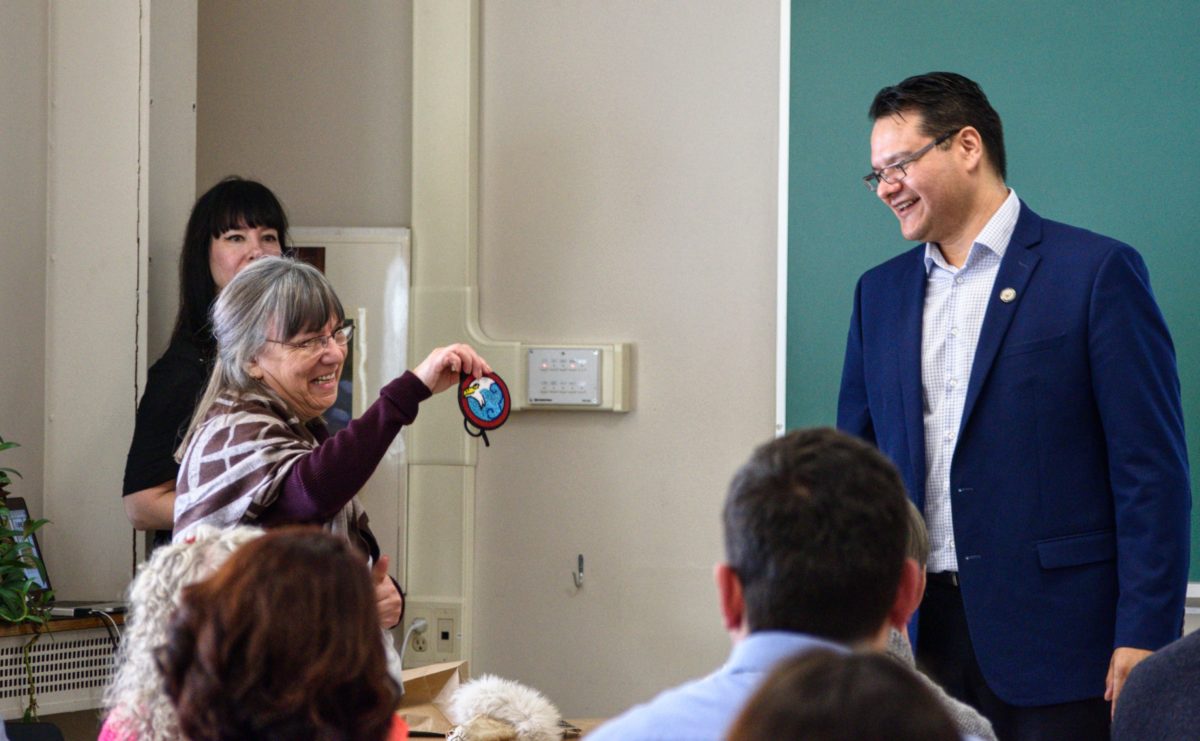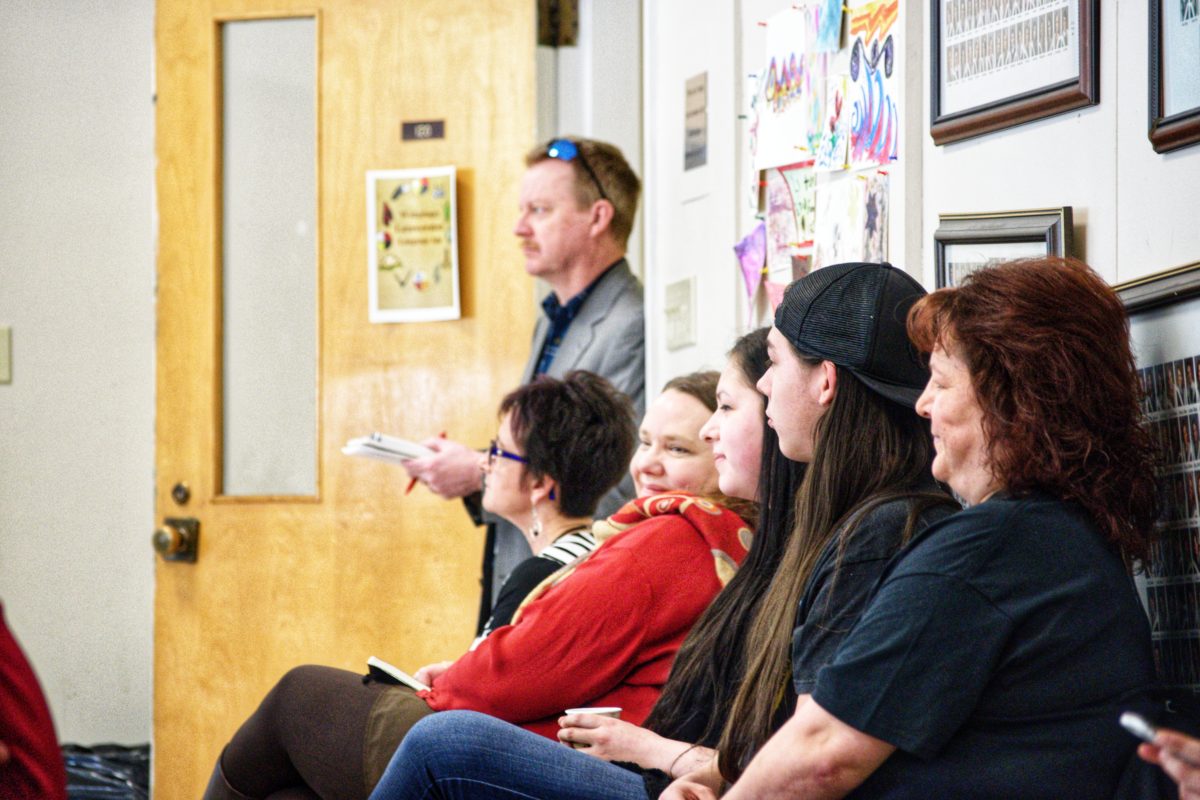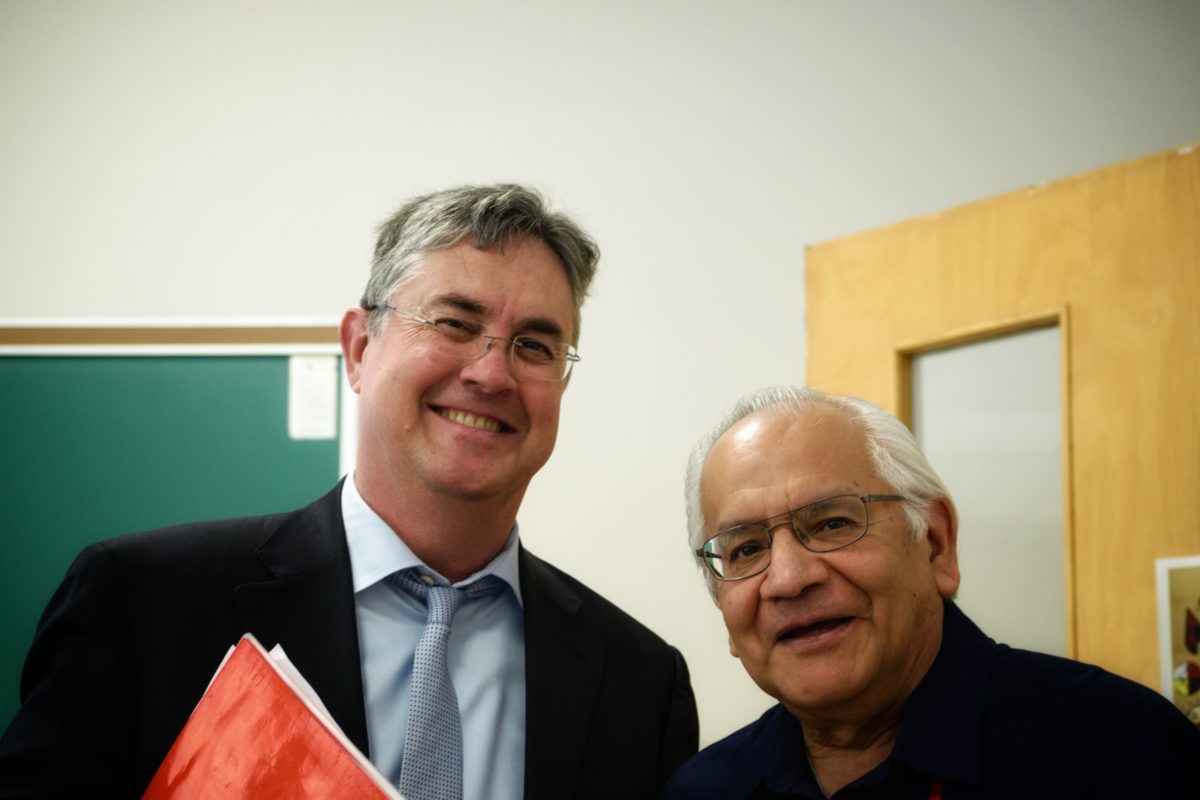A new app was launched on March 16 with the aim of restoring Wolastoqey identity.
The University of New Brunswick’s Mi’kmaq-Wolastoqey Centre launch of Wolastoqey Latuwewakon Language app was held in Marshall d’Avray Hall. George MacLean, UNB’s vice-president academic, offered a welcome to those in the audience.
“We recognize that the University of New Brunswick is located on traditional territory of the Wolastoqey. I offer my respects … This is a wonderful experience for the university,” MacLean said.
“The University of New Brunswick is excited to be working with our communities [aboriginal bands and populations] and responding as an institution to the Truth and Reconciliation Commission.”
The app was developed by Ogoki Learning Inc. and can be used on most smart devices. Using staff sourced from the Wolastoqey communities which included elders as well as UNB’s elder-in-residence, Imelda Perley (Opolahsomuwehs); David Perley, Mi’kmaq-Wolastoqey Centre director; and graphic designer Stephanie Perley.
MacLean said the university has also hired an Indigenous lead to represent both campuses.
“[They will implement] a ten-point action plan that ranges from the dedication of physical space to changes in the curriculum as well as benefiting our community,” he said.
Celebrating together
The event was broken down into sections that built a narrative on the Wolastoq language.
The first set showcased the deep-rooted cultural identity of the language. Two elementary students from St. Mary’s First Nation practiced the Wolasuweltomuwakon, or giving thanks to the ancestors for carrying the language. Imelda Perley then lead a prayer and there was a performance of the Wolastoqey song by Pokuhulakon Witsehkehsu.

Allan Sabattis-Atwin, a councillor from Oromocto First Nation, was next to speak on the revitalization of the language. There are restoration initiatives that would be made easier through a resource like the app, he said.
“I’ve been working closely with MWC to implement the language revival program in my community. Our community has come together to learn the language and it is nice to see more resources become available to us,” he said.
Sabbattis-Atwin said there are YouTube videos of the program, as well as elders’ stories told in the language, which can be found by searching “Oromocto First Nation language revival program.”
“This is the best way to share and preserve our language in schools. I feel like the beauty of the language is held in this room and I challenge all of you to not just sit here but to carry the language outside of the room.”
Endangered languages
David Perley said he is concerned about the endangered status the Wolastoqey language has gained in Canada.
“There are 88 endangered languages in Canada. Mi’kmaq and Wolastoqey are two of them,” he said.
He said in Nova Scotia, the Atlantic First Nations’ help desk had developed many apps for the Mi’kmaq language in an effort to revitalize the language.


“I knew we could have something similar in New Brunswick to revive our Wolastoqey language.”
The latter part of the launch detailed how traditional values were formatted into the app and the importance of such an application’s need to be used in a social context, so a user always has access to an elder.
Darrick Baxter, president and head of the app development through Ogoki Learning Inc., discussed the intricacies of properly representing the culture and language through the designs of Stephanie Perley.
When asked about the government’s lack of support in developing such an app after they had been the ones to displace this communities and many others of their languages, Baxter said it’s not new to him.
”I see this all the time through ‘O’Canada’ as a big push for language revitalization across the board, but communities like these don’t receive any funding because when they try to receive it, it is nonexistent or they are not approved, which is a shame because they are to doers able to make change,” Baxter said.
Now launched on iOS and Android operating systems, the app relies heavily on Imelda Perley’s teachings, as well as lessons and wisdom sourced from local communities and elders.
Perley was tasked with transcribing the language as well as creating new teaching forms.
To end the launch on a sign of gratitude, Imelda and David Perley presented Baxter with the gift of a medallion that was designed by Stephanie Perley.
Before the celebration ended in traditional feast, Imelda Perley had one last sentiment to share with the group about how language is a gift.
“When you are a classroom teacher and you teach the language one of the most disappointing things is when there’s absenteeism,” she said.
“In a class, you teach once three hours a week after their ancestors were punished for learning it … because the language should connect culture to the body and the mind of the speaker through blood memory making it an internalized part of their identity … and we could not have done this without help, but this restoration is not over yet.”

